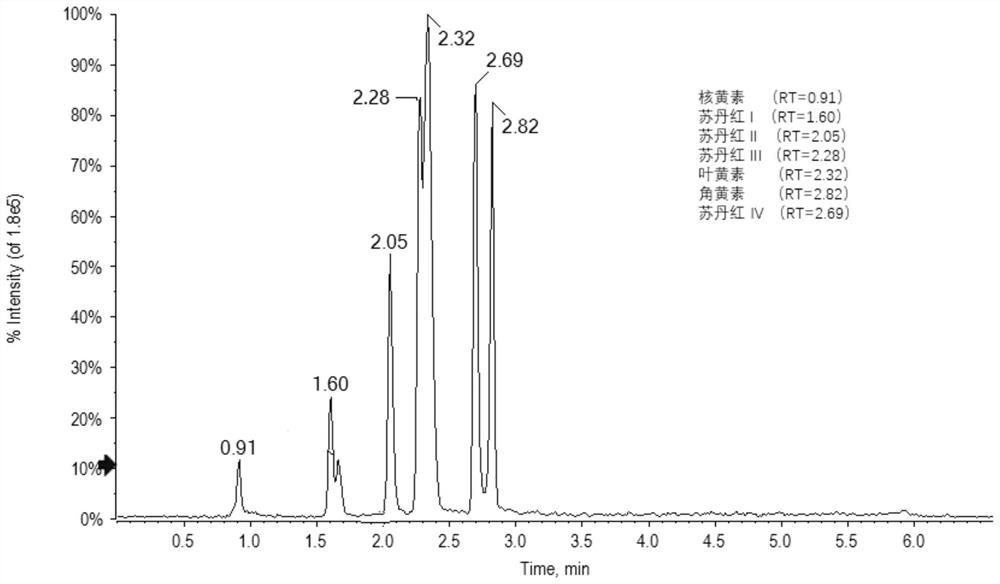Method for simultaneously determining seven pigments in eggs
A technology of eggs and pigments, which is applied in the direction of measuring devices, instruments, scientific instruments, etc., can solve the problems of qualitative and quantitative analysis of multiple pigment substances, single target object, etc.
- Summary
- Abstract
- Description
- Claims
- Application Information
AI Technical Summary
Problems solved by technology
Method used
Image
Examples
Embodiment 1
[0021] Example 1: Magnetic DQTP / Fe 3 o 4 Preparation methods of nanomaterials
[0022] Place a 3 mL test tube containing 17 mg of 2,6-diaminoanthraquinone (DQ) in DMF in a water bath at 90°C. 10mg of 1,3,5-trimethylphloroglucinol (TP) was formulated with DMF to make 10mg / L, and 0.05mL of 6mol / L acetic acid solution was added to the solution of acetic acid, which was fully ultrasonicated, and then 1mL was slowly added dropwise to DQ with a pipette gun. In hot solution, the process is controlled within 1h. After the TP solution was added completely, plug the test tube mouth with degreased cotton, and continue to mix the solution in a water bath at 90°C for 3 hours. The resultant was soaked in deionized water and acetone for 24 h to replace unreacted ligands, and dried in vacuum to obtain DQTP. 80mg FeCl 3 ·6H 2 O and 50 mg FeSO 4 ·7H 2 O was dispersed in 20 mL of pure water. Add 70 mg of synthesized DQTP and ultrasonically disperse at 80°C to prepare a suspension. 30% ...
Embodiment 2
[0023] Embodiment 2: A kind of pretreatment method of extracting 7 kinds of pigments in eggs
Embodiment 3
[0026] Example 3: A method for detecting the content of 7 pigments in eggs
PUM
 Login to View More
Login to View More Abstract
Description
Claims
Application Information
 Login to View More
Login to View More - R&D
- Intellectual Property
- Life Sciences
- Materials
- Tech Scout
- Unparalleled Data Quality
- Higher Quality Content
- 60% Fewer Hallucinations
Browse by: Latest US Patents, China's latest patents, Technical Efficacy Thesaurus, Application Domain, Technology Topic, Popular Technical Reports.
© 2025 PatSnap. All rights reserved.Legal|Privacy policy|Modern Slavery Act Transparency Statement|Sitemap|About US| Contact US: help@patsnap.com



